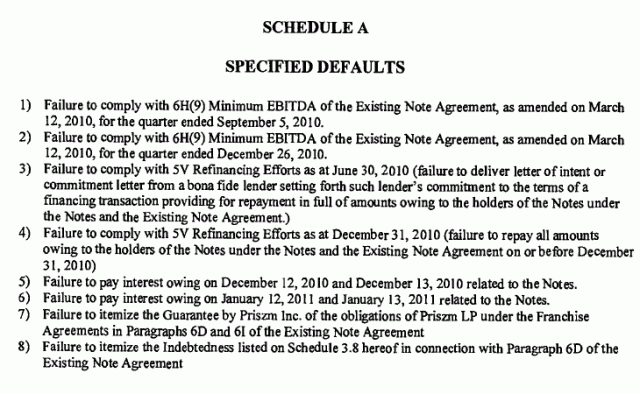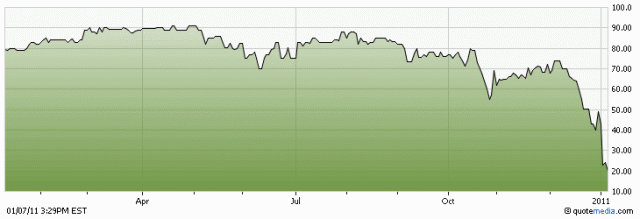First Uranium posted a production report for their last quarter. In the Thursday morning very long release contained the words that all equity investors dread:
The Company’s current cash resources may be insufficient to address its medium-term working capital needs. Accordingly, the Company has retained RBC Capital Markets as its financial advisor to review all funding alternatives.
Nobody appeared to read this paragraph until the opening of trading on Friday when presumably all the analysts released negative reports on the company.
The company’s common stock declined significantly Friday – from about $1.17/share to about $1.05/share presently. What is interesting is that this is purely from the news contained in the Thursday release – so institutional investors and analysts could not interpret the statement until given an evening to doing so.
I sold all the debentures (TSX: FIU.DB) out of my TFSA on Thursday for 80 cents on the dollar, but this was strongly instigated by the report. Most people on Thursday mis-interpreted the report as “steady as she goes” for the company operationally when they likely missed the critical part concerning the future capital requirements.
I also had some debentures in my non-registered account that I jettisoned, but still have some position.
First Uranium will likely have to raise further equity or debt capital to bridge their capital expenditure requirements. After that, presumably their existing Ezulwini mining operation could be cash flow positive. The equity is a high risk, high reward situation that I have not invested in. Depending on how such financing is structured it could be positive for debenture holders (e.g. a straight equity raise), but the company is otherwise restricted in terms of raising secured debt because of an existing agreement with noteholders (of which I own some as well).

